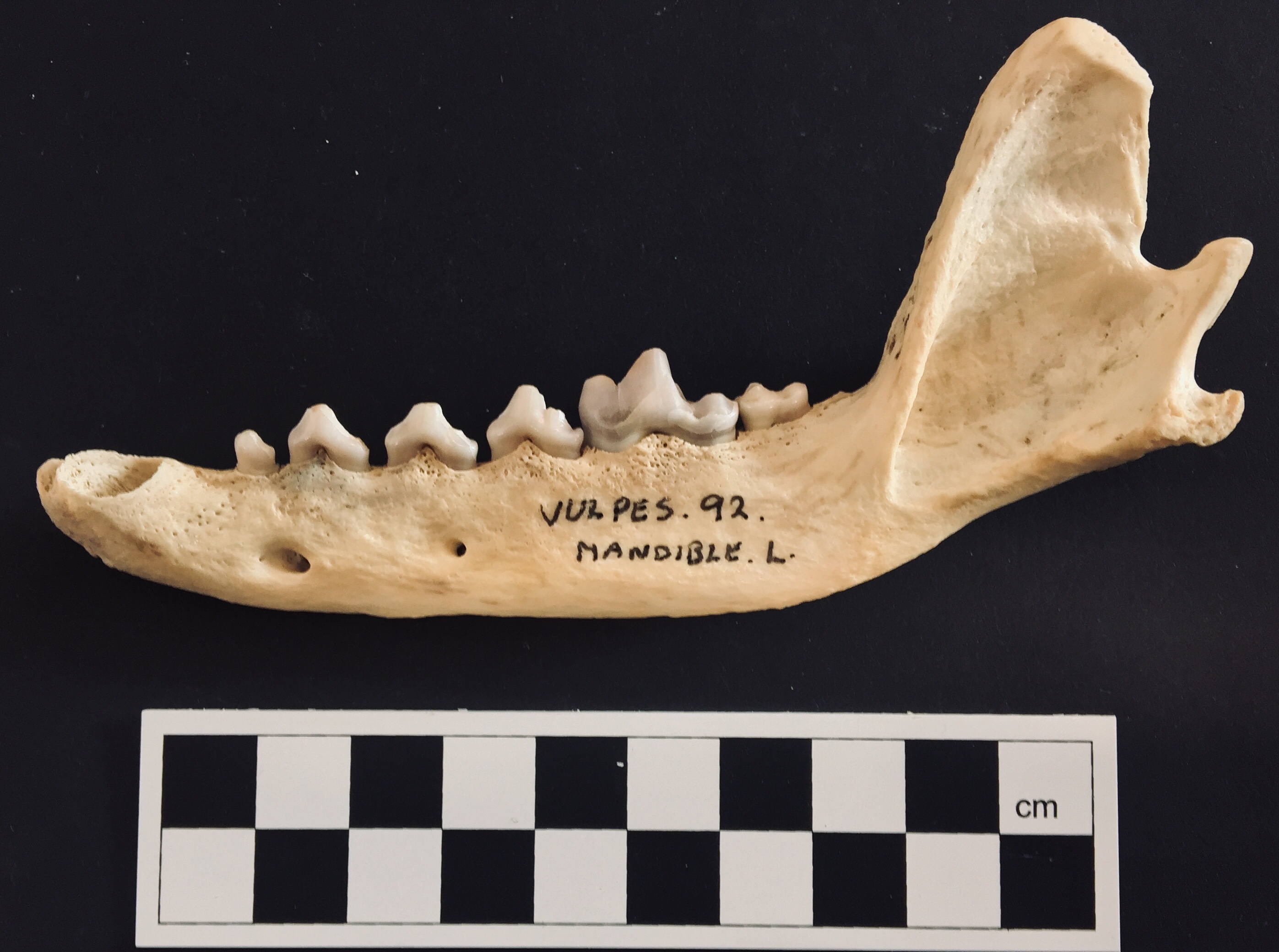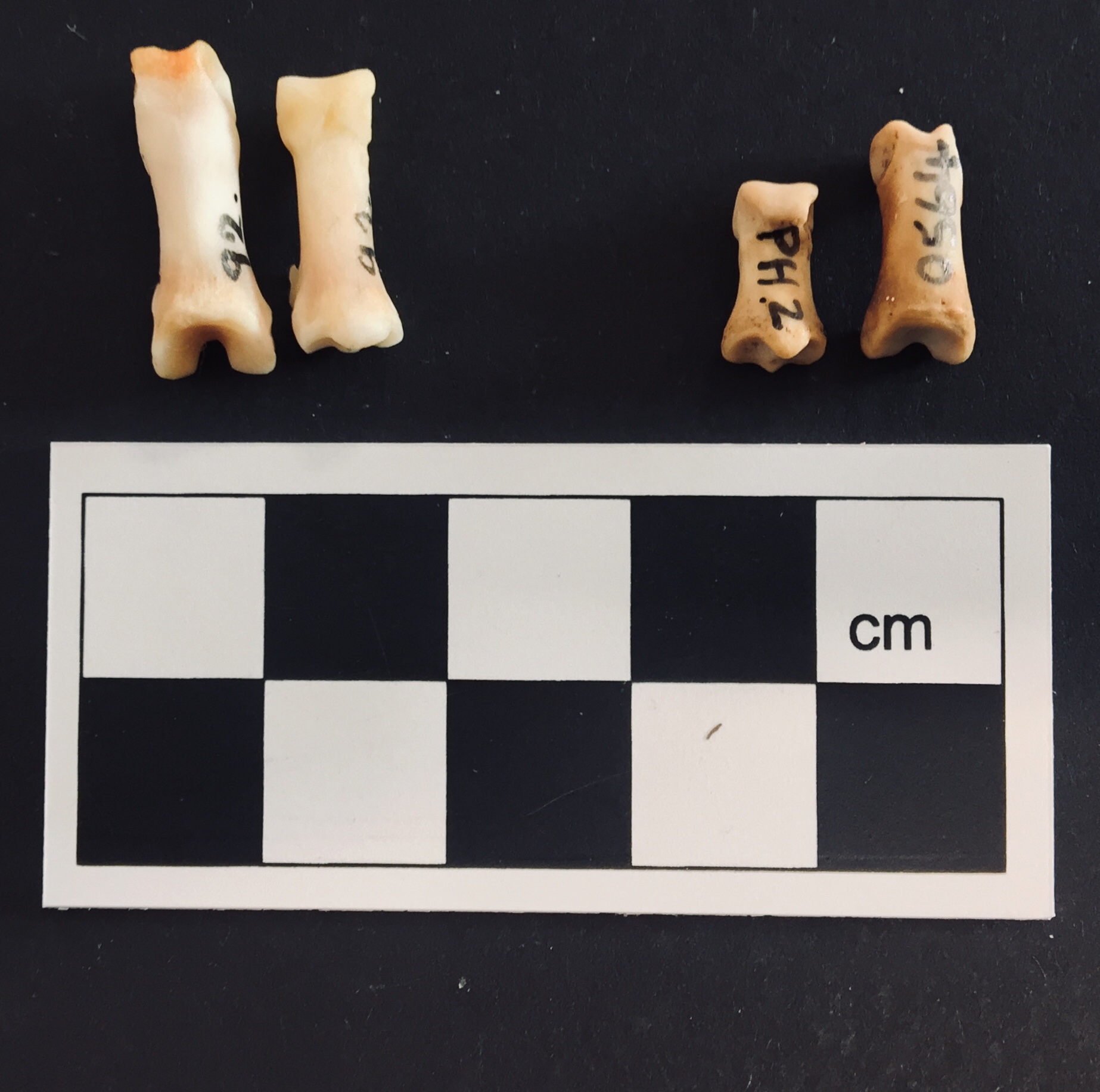It’s been a while since I’ve made a Comparative Anatomy post! But after running into an issue with a possible fox/badger bone fragment, I figured it might be time to make a new one. And if you have any particular comparative anatomy posts that you’d like me to make in the future, please feel free to contact me about it!
Badgers and foxes – two animals that I have literally never seen in the wild until I moved to England. Honestly, I don’t even think I ever really though about either of them until I moved here. And yet, both are relatively common around Britain, which has caused me to become quickly familiar with their bones on the off-chance that they get mixed into an assemblage I’m currently working on (one of the many problems you face as a zooarchaeologist who works in a regional area that is so different from the one you grew up in!). There’s way more detailed comparative guides out there (see “References” below), but here’s a quick little post showing off some of their anatomical similarities and differences:
Skulls

At first glance, fox and badger skulls may look very much alike! However, there are some significant differences that will make telling the two apart a lot easier than you’d think. Possibly the biggest difference is in the general characteristics of each skull – badger skulls tend to be a bit “chunkier” and more robust, yet also shorter with a less elongated “snout” area, so to speak. Foxes, on the other hand, are more flat, with more elongated, perhaps even graceful arches and curves and are a bit thinner in comparison.

Another key difference can be seen if we look near the back of the skull where theses long ridges (called sagittal crests) can be found. Both foxes and badgers have relatively prominent sagittal crests, but badgers’ crests are a bit bigger for the most part.
Teeth

Badger and fox teeth look relatively similar as well. They have a sort of curvy, “wave”-shape that you can also see in dogs (see my Teeth post for more information). However, there are slight differences. Badger teeth, as you can see above, are arguably flatter, especially in the back molars.

Fox teeth, on the other hand, are much more sharper and tend to be in greater number than badgers.
Long Bones

There are better and more detailed guides out there that get into all of the long bones of both badgers and foxes (see “References” again), but for the sake of brevity we’ll just be looking at two: the humerus and the femur. Again, you could argue that a general rule of thumb is that fox bones, unlike badger bones, are a bit thinner and longer. Badger bones are more robust, but shorter.
The humerus in a badger is very characteristic of this, as it is very short, yet robust. The hole at the bottom of the humerus is very oval shaped. In foxes, on the other hand, the humerus is much more elongated and thin. They also have a hole at the bottom of the bone, but this one is arguably more circular than ovular.
As for the femur, possibly the best indicator for what species you’re working with can be found at the “neck” at the top that leads to the little round bump known as the “femoral head”. Foxes don’t really have much of a “neck”, so the femoral head basically sits on top after a bit of a dip. As for badgers, their “neck” is much longer and more visible – the top of the bone clearly thins out into this “neck” as it leads to the femoral head.
Phalanges

Honestly, if you’re tasked with differentiating between the phalanges of a fox and badger…yeah, uh…good luck! Again, you could roughly estimate based on general size, as foxes generally tend to be larger – but at the phalanges level? Hmm…
You know what, let’s just put down “small to mid-sized terrestrial mammal” and call it a day, yeah?
References
Johnson, E. (2015) A Skeletal Comparison of Domestic Dog (canis familiaris), Red Fox (vulpes vulpes), Badger (meles meles), and Domestic Cat (felis catus). Retrieved from https://ifeelitinmybones.files.wordpress.com/2015/09/a-skeletal-comparison-of-dog-fox-badger-and-cat.pdf.
McGowen-Lowe, J. (2015) The Difference Betweeen Fox and Badger Skulls. Retrieved from http://www.jakes-bones.com/2015/12/the-difference-between-fox-and-badger.html
If you’re financially stable enough, why not donate to help out marginalised archaeologists in need via the Black Trowel Collective Microgrants? You can subscribe to their Patreon to become a monthly donor, or do a one-time donation via PayPal.
My work and independent research is supported almost entirely by the generosity of readers – if you’re interested in contributing a tiny bit, you can donate here.
